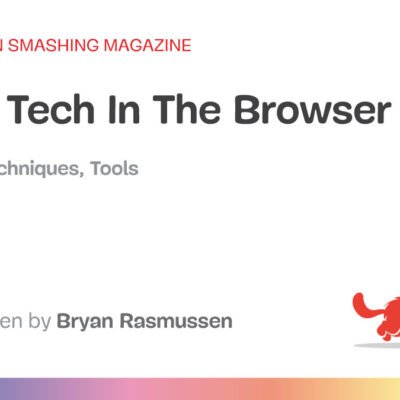AI is only as powerful as the data behind it.
You’ve probably heard the phrase “garbage in, garbage out.” That’s always been true in analytics, but in today’s AI-driven world, the consequences of poor data are greatly amplified. Flawed models, biased predictions and opaque decision-making all trace back to one root cause: a data foundation that just isn’t ready.
At SAS, we believe better data yields better decisions. And as enterprises race to embed AI across their operations, smarter data management has become the critical differentiator.
But how prepared are most organizations to deliver an AI-ready foundation?
According to recent studies from DBTA, many enterprises still struggle with basic data management maturity. While 40.9% report taking a proactive approach, “a substantial gap exists between strategic data usage aspirations and execution.” This gap manifests itself in many ways – for example, as siloed data, brittle pipelines and patchy governance. But the end result is the same: too many AI pilots get stuck in purgatory, and at a time when the pressure on IT and data teams to deliver measurable ROI on AI projects continues to intensify.
So, what’s standing in the way of having AI-ready data?
Casper Pedersen, SAS’ Data Lead in EMEA, has worked with hundreds of enterprises across industries over several decades. “We see six common data management challenges facing today’s customers and have developed a data management framework, based on SAS® Viya®, to address them,” he explains. These challenges create internal pressures such as data infrastructure complexity, storage inefficiency and productivity bottlenecks, as well as external pressures such as talent shortages, migration issues and stack complexity.
Let’s take a closer look at each and how SAS Viya addresses them.
#1: Data infrastructure complexity
If your AI efforts are stuck, the root cause may be excessive complexity in your data structure. Complexity increases as different teams work with different data formats, models break due to schema drift and pipelines get bogged down by transformation steps. It ultimately leads to rising cloud costs, slow performance and a mess of overlapping tools. Before long, you’re spending more time patching data flows than building models.
SAS SpeedyStore (SAS Viya on SingleStore) solves this by unifying structured, semi-structured and time-series data into a single, ultra-fast engine. You’ll benefit from:
- Having a single architecture for ingesting, querying and analyzing data.
- The ability to run real-time analytics on streaming data without ETL delays.
- AI-optimized performance with in-memory compute.
- OLTP + OLAP support for transactional and analytical workloads.
In short, this means data engineers spend less time patching and more on making progress.
#2: Storage inefficiency and productivity costs
Most data teams are forced to choose between two options: fast or cheap storage. This means your business ends up either paying for expensive, always-on compute or sacrificing performance when it matters most.
If you rely on legacy storage approaches, you’ll pay premium prices for all data, even rarely used data, in an effort to prevent productivity bottlenecks. But this just leads to storage inefficiencies and escalating costs.
With Viya’s SpeedyStore approach, you can cut infrastructure costs without hurting performance. Smart-tiered storage (hot, warm, cold) lets you spend where it counts and save where you can – all within a unified platform. You can sort and store your data optimally with ease. For example, in-memory storage accelerates the performance of critical workloads, and cold storage optimizes costs for rarely accessed data. You get the best of all worlds with no vendor sprawl, no data duplication and no unnecessary ETL.
#3: Productivity bottlenecks
Data engineers are highly skilled, hard-to-find resources who can get bogged down with repetitive, manual tasks such as searching for data, collecting data, checking files in and out, fixing errors and pipeline issues and more. At the same time, data volumes keep growing exponentially, compounding productivity bottlenecks.
Viya unlocks serious productivity gains for data engineers. In fact, in a recent independent benchmark, Viya delivered a 16x productivity boost for core data engineering tasks compared to both commercial and open-source platforms. One test showed that with Viya, a business analyst could complete in 18 minutes what would take them five hours using other platforms.
Why – and how? SAS Viya automates the tedious parts of the data engineer’s job using no-code ETL with drag-and-drop flows, automated data profiling, masking, and quality checks, and AI-assisted recommendations for transformation and prep.
#4: Talent shortages
Due to a global shortage of skilled data talent, organizations can’t hire enough data engineers, data scientists and AI ops specialists to keep up with demand. This is no surprise given the explosive demand for AI, data-driven decision-making and an insufficient supply of qualified professionals.
Given these realities, you can’t just hire your way out of the data talent shortage. But you can bridge the gap by expanding who gets to contribute to data management. Solutions like SAS Studio offer a powerful, low-code, drag-and-drop interface for analysts and business users to access and prepare data.
These flows can be reused, scheduled or handed off to other teams. More advanced users, such as data scientists and engineers, have full code flexibility. Everyone works in the same governed environment, with shared flows, metadata and access policies. This enables analysts to self-serve without IT bottlenecks and engineers to focus on higher-value tasks. Governance and quality are baked into data management from day one.
#5: Rising migration risk and cost
Modernizing your data stack can seem like a daunting effort. Between sunk costs in legacy tools, the risk of disruption and the effort to retrain teams, migration often becomes the bottleneck to innovation.
The good news is, you don’t have to rip and replace to modernize. With Viya, you can integrate incrementally into your current ecosystem – cloud, on-prem, or hybrid – and evolve at your own pace using prebuilt connectors to legacy tools and reusable logic and flows, which reduces rework. Viya also supports metadata-driven orchestration, which keeps governance intact during the transition. And for those modernizing from SAS 9 to Viya, SAS has your back with experts, tools and resources to support your migration journey every step of the way.
#6: Stack complexity and ROI uncertainty
One of the biggest blockers to AI ROI today isn’t ambition – it’s complexity. Many organizations are juggling a patchwork of point solutions across the data and AI lifecycle – one for ingestion, another for quality, another for governance and still others for modeling, deployment and monitoring. It’s a Frankenstack of disconnected tools, making it hard for teams to prove value or move fast.
SAS Viya helps by simplifying the stack to accelerate ROI. It does this by bringing together the entire data and AI lifecycle in one unified, cloud-native platform – from ingesting and preparing data to applying quality and governance controls and tracing that data across your analytics and AI initiatives. Because everything is connected, you see the full picture and can tie your data investments directly to business outcomes.
The result? Faster time to value, lower total cost of ownership and greater confidence in the insights you deliver.
Ready to depressurize your data?
Whether you’re looking to consolidate your stack or augment what you already have, Viya gives you options:
- Replace multiple tools with an end-to-end solution that’s optimized for data and AI.
- Or integrate seamlessly with your existing ecosystem using open APIs, prebuilt connectors and metadata-driven orchestration.
You shouldn’t have to choose between simplification and performance. With Viya, you get both.





